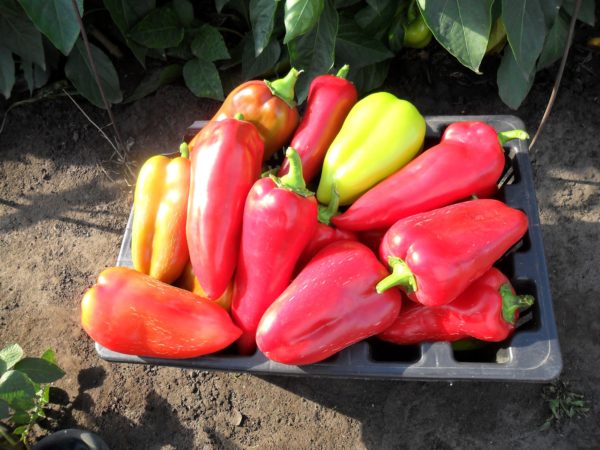
Kakadu Pepper hails from Bulgaria. He attracts his fans mainly with taste and useful properties. However, in order to grow this variety at home, many factors must be taken into account, since this plant is quite picky. For this reason, lovers of Kakadu pepper choose this particular type, since it is able to cope with the weather conditions of the area in which they are going to grow it. Gardeners want to simultaneously combine the unpretentiousness of the plant and its productivity, which at present they are successfully successful.
For this reason, Kakadu is the most common and popular variety cultivated by pepper lovers in our country. Due to its characteristics, including the uniqueness of its chemical composition, it is considered one of the most useful varieties of pepper.
Content
Characteristics of Cockatoo Peppers
Kakadu pepper is a mid-season type of pepper that is quite sensitive to sunlight and heat, but it is quite moody in terms of growing conditions and principles. During the period of dynamic growth and ripening, pepper grows up to one and a half meters in height, and at this time it looks quite unusual. In appearance, pepper resembles a wide-spreading bush, in which there are no leaves in the lower part. Kakadu fruits are quite large in size, and very weighty - their mass ranges from 300 g to 500 g.
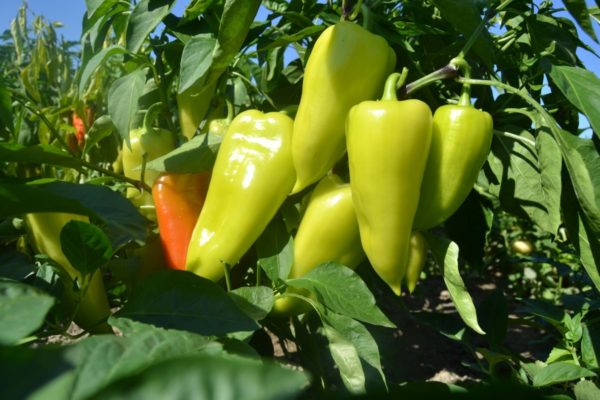
The first fruits on Kakadu pepper grow quite quickly after planting - literally after 2-2.5 months. However, as noted by experienced gardeners, this plant is able to begin to bear fruit even before the appointed time, literally a few weeks before the designated time.
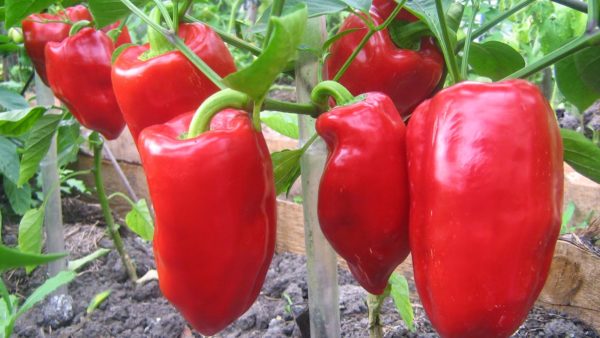
A very important aspect is the thermophilicity of Kakadu, which is why experts and professional gardeners recommend planting it in places almost in a tropical climate. In this regard, the plant is very sensitive and fears even short-term changes in temperature indicators.
What are the features of Kakadu Pepper Care
It is best to plant a Cockatoo in mid-late March. If you purchase seeds with pre-treatment, then you do not need to devote time to this yourself, you can already proceed directly to the planting itself.
To begin with, you need to prepare the containers in which you plan to plant pepper seeds, filling them with a soil mixture.You should also approach the choice of soil very carefully - it must be porous and light, freely pass air in order to enrich itself with oxygen, and be fertile. It is also recommended to add mineral fertilizers and humus before planting, after which there will be no need to feed Kakadu pepper immediately after you sow the seeds.
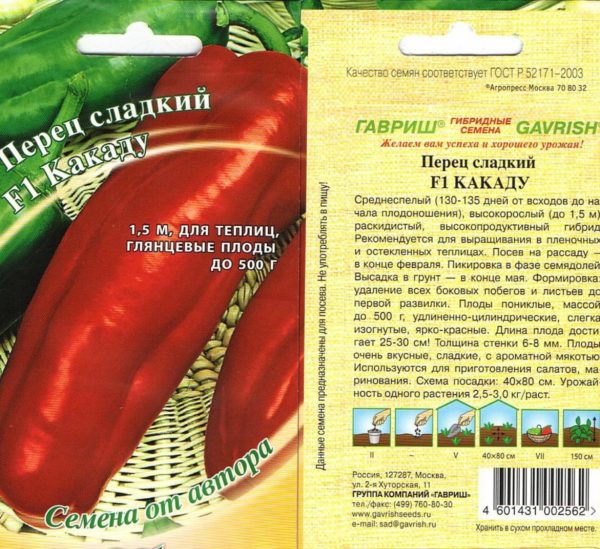
Seeds should be at a relatively shallow depth, it is advisable to moisten them immediately, which is best done with a spray gun. Over the next week, you need to constantly maintain a favorable atmosphere so that the seeds germinate. It is very important to avoid temperature extremes.
As soon as your plant gives the first shoots, the temperature regime in the room must be changed. The temperature will need to be reduced to 18 degrees, or if it is impossible to do this in the place of growing Kakadu pepper, then transfer it to a room where there will be such a temperature. Watering the pepper must be done every day. A necessary condition is the use of warm water, and as soon as the seedlings give the first six leaves, this will indicate that the plant is ready for planting on open ground.
To conduct quality care of Kakadu pepper, the following rules are very important:
- It is necessary to regularly water the pepper. As soon as the first shoots appear, the plant no longer needs to be provided with water daily, so several times a week will be enough. However, do not skimp - it is advisable to water so that the water literally shows above the soil under the plant.
- It is important to periodically feed the plant. It is advisable to do this at least 1-2 times a week. The first time you can add chicken droppings to the soil, and the next time you use a mixture of droppings with phosphorus and the addition of potassium salt.
- A prerequisite is the equipment of the plant with special nets. It is recommended to tie it in the right places and cut the shoots that grow sideways and are rather weak. This will allow subsequently to properly form the plant.
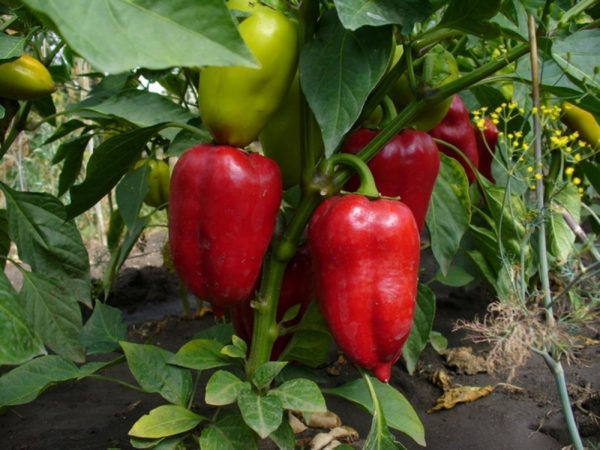
Pests of Cockatoo Pepper and its Disease
Nevertheless, even timely and proper care of Kakadu pepper is not a guarantee that it will not undergo an influx of diseases or harmful bacteria. Some diseases can overtake your plant even during the initial ripening period, and if the necessary measures are not taken in time, the plant will die.
Pepper Kakadu can undergo such a disease as the top rot of the fetus, which can happen due to a sharp drop in temperature indicators, violation of the established regime of watering the plant. This can only be avoided by timely spraying and bait. We must pay great attention to the care of the plant.
If it comes to pests, then you need to know that Cockatoo peppers are especially fond of ticks and aphids.To eliminate them, it is necessary to regularly spray the plant with an aqueous ash solution, which can be made independently at home, as well as use ready-made chemicals purchased from the manufacturer. However, it is necessary to mention that in the early stages of plant development, the use of pesticides is unacceptable, since this will destroy the pepper.

What are the benefits of Kakadu pepper?
Regarding the decorative benefits of Kakadu pepper, it is identical to many other plants. Its sprawling nature and height, which makes pepper look like a small tree, can please you no less than a flower bed. As a dietary supplement in summer salads, Kakadu pepper is optimal, including various dishes that can be made from it, for example, stuffed or used as an addition to side dishes. Moreover, if you decide to freeze a vegetable for the winter, the plant will retain its beneficial properties during this period. Cockatoo pepper can be prepared in various forms, and in each it will reveal its taste.
Interesting! Kakadu pepper contains 6 times more vitamins of group C than in lemon.

Kakadu Pepper Reviews
Many gardeners note very important features characteristic of Kakadu pepper:
- this culture is suitable for use in many types of cooking, the range of its use for food purposes is almost unlimited;
- when growing pepper, pinching is necessary;
- Kakadu pepper seeds sprout very quickly;
- pepper quickly assimilates in climatic conditions and gets used to the soil;
- the plant quickly ripens and quickly bears fruit.
For this reason, most gardeners often tend to cultivate Kakadu varieties than other varieties of pepper crops.




 Calorie pepper stuffed with meat and rice - BZHU per 100 grams
Calorie pepper stuffed with meat and rice - BZHU per 100 grams Gorky pepper - the best varieties for open ground
Gorky pepper - the best varieties for open ground Hot pepper seeds - the best varieties for open ground and reviews
Hot pepper seeds - the best varieties for open ground and reviews Capsicum tincture for hair - how to use and reviews
Capsicum tincture for hair - how to use and reviews